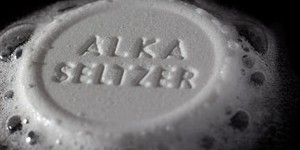Others Like “Encryption” (top 20 results)
|
What causes the most stress for teenagers? Is it school? family relationships? peer pressure? worries about the future? Design a survey to find out what contributes to teens' stress levels. Possible variations include: How do teenagers deal with stress? Are today's teens more or less stressed than their parents were as teenagers? Were the sources of stress the same for your parent's generation or different? (Idea from De Biasi, 2003)
Read more
This project can apply to soccer, hockey, baseball and many other sports. What is the effect of stopping the kick/shot/swing at the moment of impact vs. following through? Think of a way to measure the outcome in each case, and explain your results. (idea from Gardner, 2000, 83-85; for more information with regard to specific sports, see: Barr, 1990, 12-14; Gay, 2004, 142-144; Adair, 2002, 30.)
Read more
Did you know that you can make a simple hygrometer (a device for measuring the relative humidity of the air) with hair? Search online for instructions to build one. Does the type of hair used in the hygrometer affect the accuracy of the results? Do some types of hair respond faster than others? Do some types of hair give a larger (or smaller) response? You could get hair samples from classmates, or a local beauty shop. Use hair samples of equal length to construct each hygrometer. To force…
Read more
Here's a project that combines sports and math. You'll learn how to use correlation analysis to choose the best team batting statistic for predicting run-scoring ability (Albert, 2003). You'll also learn how to use a spreadsheet to measure correlations between two variables. The project description Which Team Batting Statistic Predicts Run Production Best? provides the details.
Read more
Block off one-third of a soccer net with a cone, 5-gallon bucket or some other suitable object. Shoot into the smaller side from a set distance, but systematically varying the angle to the goal line. Take enough shots at each angle to get a reliable sample. How does success vary with angle? For a basic project: How do you think your success rate will vary with angle? Draw a conclusion from your experimental results. A bar graph showing success rate at different angles can help to…
Read more
What causes landslides? The USGS Landslide Hazards Program conducts research needed to answer major questions related to landslide hazards. Where and when will landslides occur? How big will the landslides be? How fast and how far will they move? What areas will the landslides affect or damage? How frequently do landslides occur in a given locality? Investigate the patterns of landslide occurrence in your area. Are they related to locations, geology, or topography? Are they more frequent…
Read more
When you take medicine, it needs to dissolve in order to be passed into your bloodstream to have an effect. On the other hand, the drug needs to be packed into a small, dense pill to make it easier to swallow. How does the delivery method of a drug change how quickly it enters the bloodstream? Compare different brands of a drug to find out which brands dissolve the quickest. Does the pH of the stomach (which is usually between 1 and 2) matter? Compare coated to uncoated pills: does the coating…
Read more
Make a pinhole projector (see Measuring the Diameter of the Sun and the Moon). Use the pinhole to project an image of the Sun onto a wall or a piece of paper. Do you notice any dark spots on the projected image? Trace the projected image and count the dark spots. Use your pinhole projector to make images of the Sun at the same time of day for several consecutive days. How does the pattern of spots change? Can you use your data to figure out how fast the Sun rotates? Sunspot activity rises…
Read more
You can study hazards that affect coastal areas. What geological forces cause a tsunami? A tsunami (Japanese for 'harbor wave') is a wave generated by an undersea earthquake, landslip, or volcanic eruption. You can demonstrate what causes a tsunami by simulating an undersea earthquake with a water table. How does the depth of water effect the height of the wave? Do different slopes of bottom change the speed of the wave? Visit the USGS Coastal and Marine Geology Program to find out about…
Read more
What do knots, maps, mazes, driving directions, and doughnuts have in common? The answer is topology, a branch of mathematics that studies the spatial properties and connections of an object. Topology has sometimes been called rubber-sheet geometry because it does not distinguish between a circle and a square (a circle made out of a rubber band can be stretched into a square) but does distinguish between a circle and a figure eight (you cannot stretch a figure eight into a circle without…
Read more
|
Explore Our Science Videos
3D Print a Drone Frame
Two-Stage Balloon Rocket Introduction
How to Build an ArtBot





